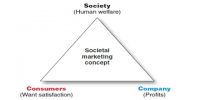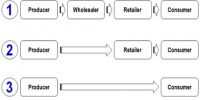Standardization determines the condition of a manufactured product such as size, quality, performance, etc. The common explanation of standardization is the knack to use standard marketing worldwide. In other words, it’s the aptitude for a company or business to use the same marketing policy from one country to the next, and across diverse cultures. Goods that cannot be produced of a single size, weight or color such as fruits, grains, eggs or cotton are graded into classes on the basis of quality.
- Standardization refers to producing goods of predetermined specifications, which helps in achieving uniformity and consistency in the output.
- Standardization ensures the buyers that goods conform to the predetermined standards of quality, price, and packaging and reduces the need for inspection, testing, and evaluation of the products.
Grading is the procedure of categorization of products into dissimilar groups, on the source of some of its significant characteristics such as quality, size, etc. Products of diverse qualities should be divided into groups or lots and related quality products are put into a grade.
- Grading is mainly needed for products which are not produced according to predetermined specifications, such as in the case of farming products, say wheat, oranges, etc.
- Grading ensures that goods belong to an exacting feature and helps in realizing higher prices for high-quality output.
Differences between Standardization and Grading –
Standardization
- Standardization means that goods are of a specified and uniform quality.
- It is a set of requirements as to the desired qualities in a product.
- It is a measurement of physical characteristics and specified quality of a product.
- Standards are set by both small as well as big business concerns.
- It refers to the procedure of setting up basic measures or standard to which the products must conform and taking steps to ensure that the goods essentially produced adhere to these standards.
Grading
- Grading is the process of sorting individual units of a product into well-defined classes or grades of quality.
- It is the division of products into different categories on the basis of units possessing similar features.
- It helps in fixing different prices for different categories of the product.
- Grading is done on the basis of certain characteristics such as quality, size, etc. Particularly, in the case of agricultural products which are not produced according to predetermined specifications.
- Grading is the sorting of the produce into dissimilar lots each with the similar characteristics of market quality.
Advantages of Standardization and Grading: Standardization and Grading are useful marketing functions as they offer the following advantages:
- Standardization and Grading facilitate buying and selling of goods by sample or description. Customers can buy standardized goods effortlessly. The customers need to examine all the goods which are not standardized or graded. When goods are of standardized quality, customers do not insist on detailed assessment.
- Standardization and Grading facilitate the manufacturer to direct the goods of dissimilar qualities towards the market best suited to them. The task of middlemen becomes simple because they can converse well the characteristics of standardized products to customers.
- Standardized goods benefit from a wider market. The customers become capable to take appropriate buying decisions as they can get information about prices, relative advantages, durability, etc. of standardized goods.
- Standardization and Grading facilitate the trading of goods on the product exchange. Hedging, future trading and price comparisons become easy. This function can be accomplished by grading and standardization.
- Standardization and Grading help in raising finance because consistent products enjoy a ready market and they are eagerly received as a collateral safety for granting loans.
- Standardized products can be simply appreciated and their prices change less widely. Since qualities, measure, size of the product are known, the customers can buy goods with a fair price after studying the market price. This helps in making assurance claims in the event of loss or damages to the goods.
















